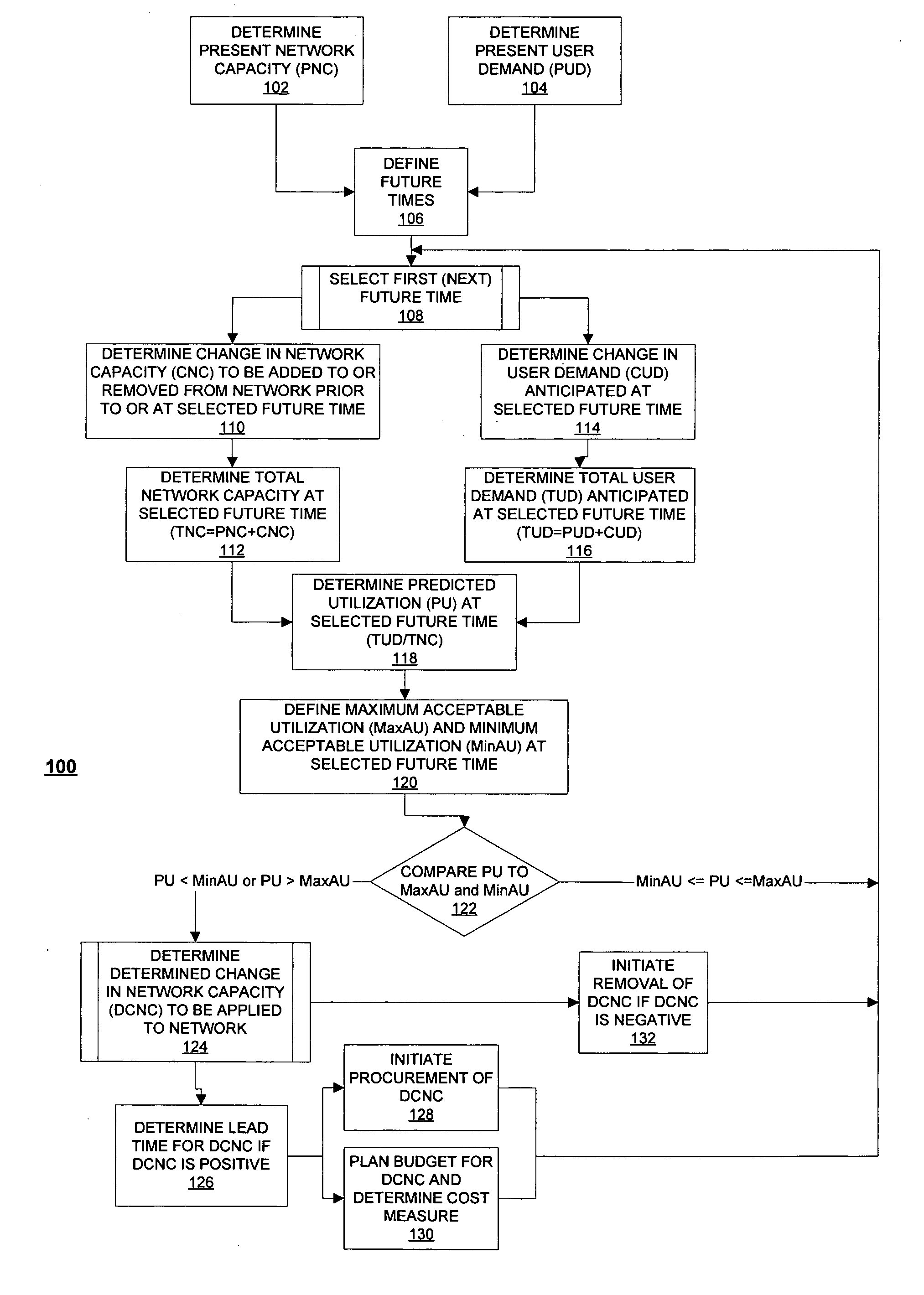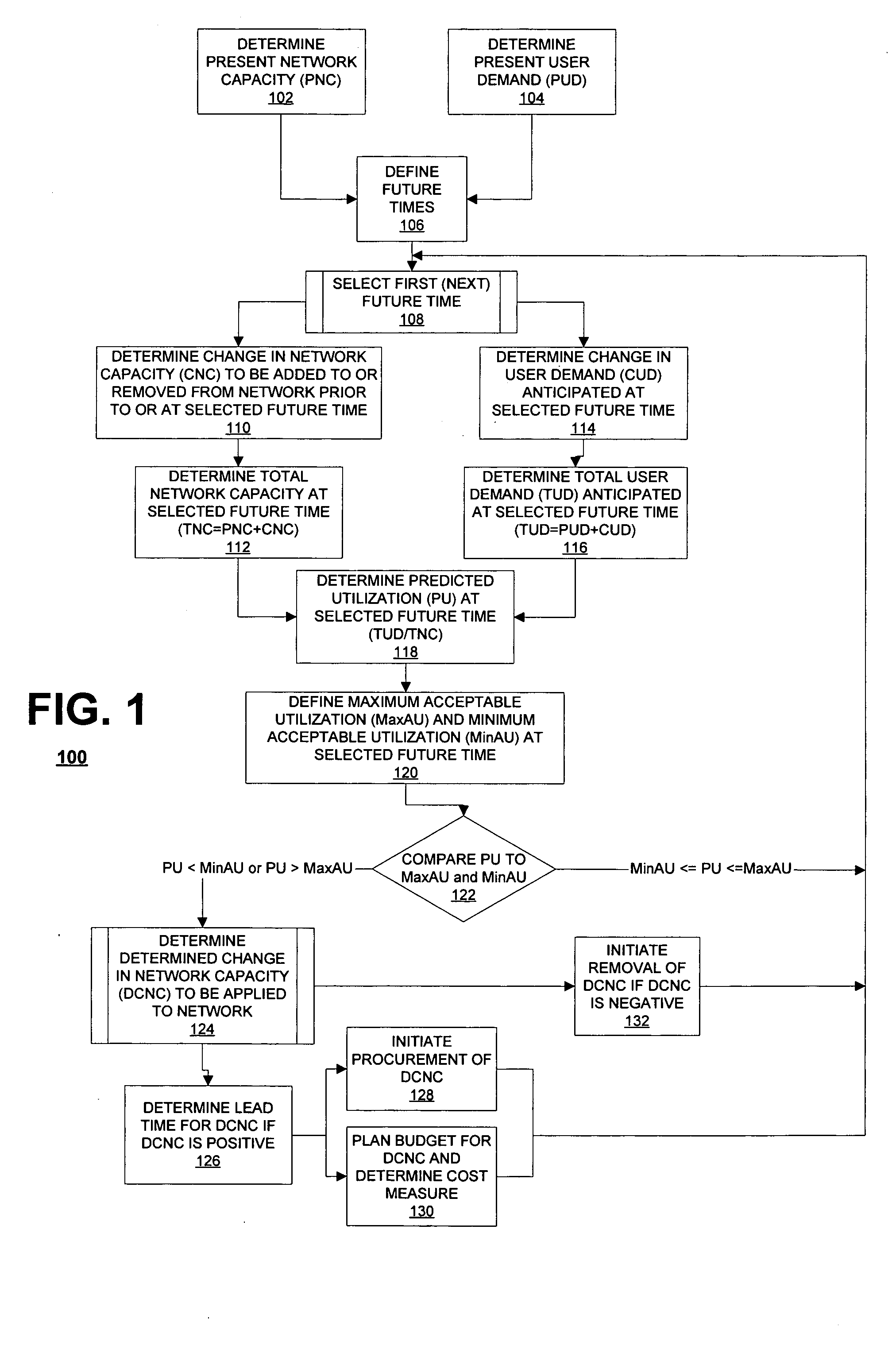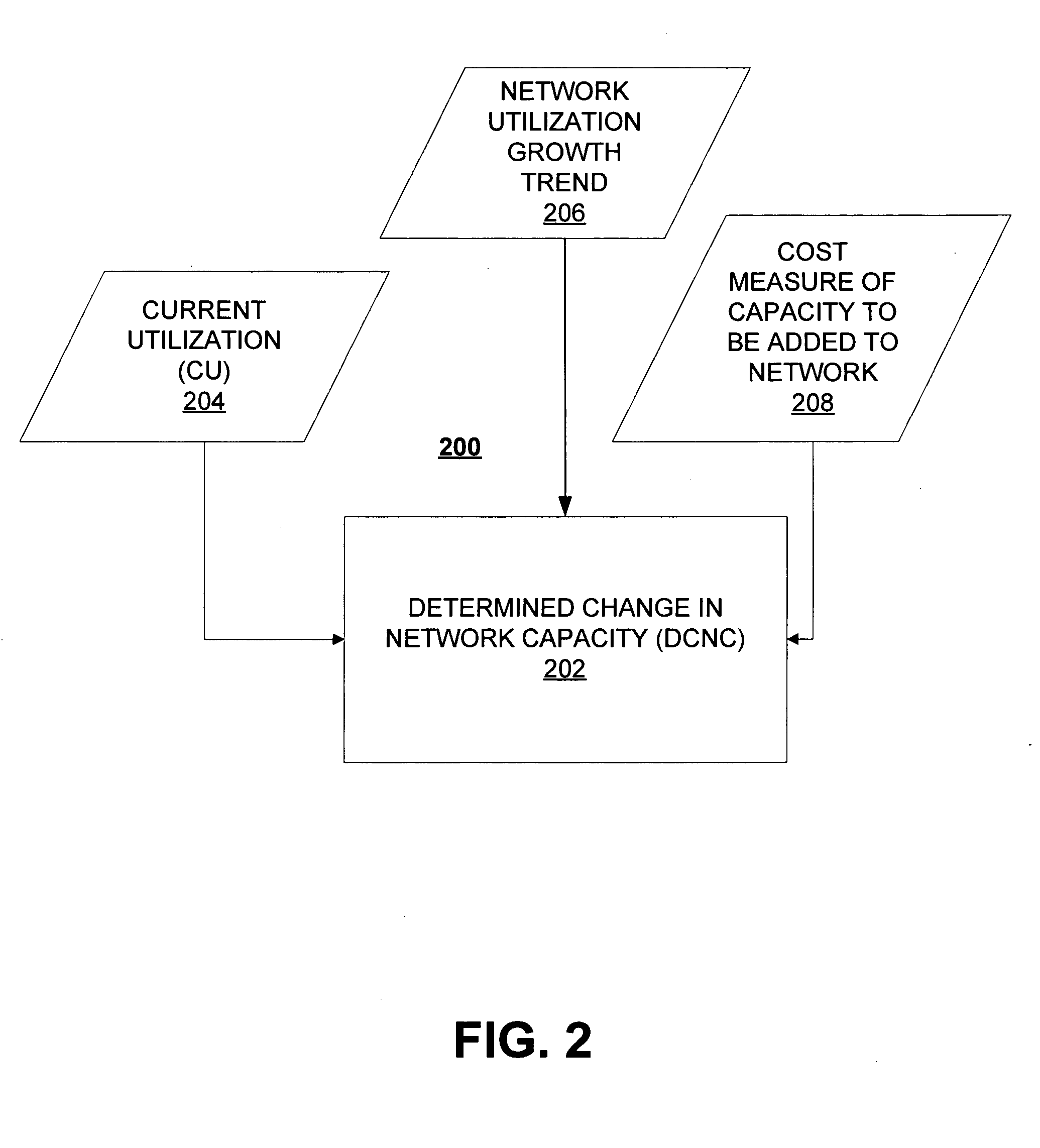System and method for predicting and managing network capacity requirements
- Summary
- Abstract
- Description
- Claims
- Application Information
AI Technical Summary
Benefits of technology
Problems solved by technology
Method used
Image
Examples
Embodiment Construction
[0051]FIG. 1 illustrates generally one method (indicated generally by reference character 100) according to one embodiment of the invention for anticipating demand for a network and maintaining capacity of a network, which may be implemented manually or via software. At 102, method 100 determines a PRESENT NETWORK CAPACITY (PNC) of the network. The PRESENT NETWORK CAPACITY (PNC) generally indicates a present capacity of the network in handling a user demand for one or more applications operating via the network. According to one embodiment of the invention, the network may have either a fixed or a burstable capacity. A fixed capacity network maintains a substantially fixed bandwidth throughout data transmission. One example of a fixed capacity network is a dedicated T-1 line, which is capable of transmitting data at a substantially constant 1.544 megabits per second (Mbps). In the preferred embodiment of the invention, PRESENT NETWORK CAPACITY (PNC) for a fixed capacity network is t...
PUM
 Login to View More
Login to View More Abstract
Description
Claims
Application Information
 Login to View More
Login to View More - R&D
- Intellectual Property
- Life Sciences
- Materials
- Tech Scout
- Unparalleled Data Quality
- Higher Quality Content
- 60% Fewer Hallucinations
Browse by: Latest US Patents, China's latest patents, Technical Efficacy Thesaurus, Application Domain, Technology Topic, Popular Technical Reports.
© 2025 PatSnap. All rights reserved.Legal|Privacy policy|Modern Slavery Act Transparency Statement|Sitemap|About US| Contact US: help@patsnap.com



